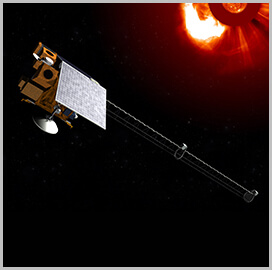
Space technologies
NASA Delivers New Solar Energetic Particles Tool to John Hopkins University Laboratory
NASA Goddard Space Flight Center has delivered the High-energy Ion Telescope instrument to the Johns Hopkins University Applied Physics Laboratory in Laurel, Maryland.
The fourth of the 10 Interstellar Mapping and Acceleration Probe spacecraft, HIT is designed to measure high-energy solar energetic particles coming from the sun in the highest-energy processes in the solar system. By measuring the transport of the high-energy radiation, scientists can better understand the sun and the local space weather, NASA said.
Eric Christian, HIT instrument lead and deputy principal investigator of the IMAP mission at NASA Goddard, said that the scientific community has been studying solar energetic particles for years and with HIT and other IMAP instruments, it will provide a new set of information regarding the particles.
The development of the new instrument was made possible by the collaboration of a diverse group of scientists, engineers and technicians at NASA Goddard and the California Institute of Technology.
NASA has been working to better understand space weather for years. In December, it entered into a collaboration with the National Oceanic and Atmospheric Administration, the Department of the Air Force and the National Science Foundation to coordinate space weather research initiatives, including observation, forecasting and other capabilities.

Category: Space




